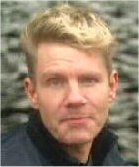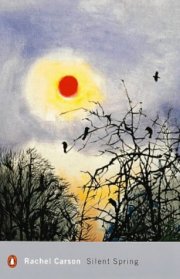Environmentalism – Big Ideas
That Changed The World
The Future of Planet Earth
Bjorn Lomborg, a former Greenpeace activist takes us through the history of environmentalism and discusses the growth in environmental awareness.
In 1978 the book Essay on Population was published and was one of the darkest, most pessimistic works ever written. It was a response to a major intellectual issue of the time. Philosophers were debating the future fate of mankind. Some argued, vociferously, that it would be a utopian one, there would be plenty of food, and poverty and disease would be abolished. Others though, were less sure.
Thomas Robert Malthus
Thomas Robert Malthus, an English clergyman, decided to settle the argument. His conclusion would shock his contemporaries. He proposed that the population was growing so rapidly that food production could not keep up, indeed the planet was not capable of producing sufficient food, so ultimately the fate of our species was to starve. Malthus was the first to suggest that there was a conflict between humans and the environment, that the world didn’t have and endless supply of resources for us to exploit.
Malthus’ fatalistic view was countered by the romantic movement, Poets such as Wordsworth, artists like Turner, and the great thinkers of the day changed the way people viewed the world. It changed the perception that nature was a wilderness to be tamed, into a view of beauty and value. This sense that nature was a spiritually good and valuable thing grew over the next century, fuelled by the advent of industrialisation.
An Essay on Population
Amazon.co.uk
Amazon.com
As industrialisation spread, many people began to be filled with fear. Nature, they felt, was under threat and nowhere was the threat of industrialisation more obvious than in the United States. When the Pilgrim Fathers first landed in the New World, it was a land of wild and untrammelled beauty. But, by the 1880’s the plains were nearly cleared of Bison, railroads criss-crossed the country and cities were springing up out of nowhere. Changes that had taken centuries in Europe, happened so quickly in North America that people feared it’s wilderness might disappear completely.
But, there was one remarkable person who was determined to prevent this happening. John Muir grew up on a Wisconsin farm where he developed a deep affinity with nature. After consuming the works of the great romantic writers, he was inspired to explore the American wilderness and in 1868 made the journey that would change his life. He hikes into the Yosemite valley in California. Yosemite was one of the great wonders of the world, home to stunning waterfalls and dramatic mountain peaks. For Muir, the wilderness was not something merely to be admired on a day-trip out from the city. It was a place to live in, to be surrounded by, to be physically experienced. For the next five years, Muir made Yosemite his home, but it wouldn’t remain a tranquil haven for long. By the 1890’s Yosemite was under threat, ranchers wanted the land to graze their sheep, prospectors were staking claims to dig mines and the foresters began felling trees for timber. Fearing the destruction of the land he loved, Muir leapt into action. He sought out climbers, scientists, artists, anyone who had a common interest in protecting Yosemite. He formed them into a society, The Sierra Club, it was the world’s first environmental organisation The Sierra Club lobbied against the development of the Yosemite region and won the support of President Theodore Roosevelt. Thanks to their efforts and years of struggle, the land was placed under the protection of the Federal Government. Today, walkers and romantics can enjoy this unique landscape and John Muir is known as the father of the National Parks.
While there appeared to be no conflict between nature and economic growth for several years, and the Malthusians and romantics co-existed quite happily, something was about to happen that would challenge the trust and optimism in technology.
In the early 50’s, Clear Lake in California was a popular holiday destination for the citizens of nearby San Francisco. In the summer months, anglers, boaters and swimmers flocked to it’s shores. There was just one thing that detracted from their enjoyment. The lake teemed with mosquitoes. Luckily the local authorities had a solution, they decided to treat the lake with a new type of pesticide. The treatment worked, the mosquitoes died and everyone was happy, at least for a while.
Then more than a hundred birds that nested near the lake died. The cause of death was a mystery and may have passed unnoticed but for the work of one woman. Rachel Carson was a biologist who, in 1958, received a letter from a friend. It explained how a dozen birds had died in her garden, a few weeks after a plane sprayed the area with pesticide. Carson decided to investigate the effects of the new pesticide and what she found would shock America and shatter the faith in the wisdom of science.
From Florida to Alaska, birds were dying or failing to reproduce, in some cases 80% of nests failed to produce young. But the full danger only became clear when Carson investigated the story of Clear Lake. The local authorities had sprayed the lake with a very low level of pesticide, but when the dead birds were analysed, scientists discovered that they contained 80,000 times the original pesticide level. Carson learned, from the scientists report, that the chemicals intended to kill the mosquitoes, could somehow accumulate in the bodies of other animals and be passed on up the food chain. Rachel Carson was horrified by her discoveries and in 1962 she revealed them to the world in an explosive and controversial book. She titled her book The Silent Spring as she feared the long term effect of these chemicals would be to wipe out the dawn chorus.
Across the country, citizens demanded new laws to set tighter controls on handling and using pesticides and, in 1972, the Federal Government banned the most notorious ones, including DDT, completely. Carson’s book started a revolution, modern environmentalism was born and it was going to transform the world and the way we view nature.
In the 1970’s, it was among the free-thinkers and radicals, the students and the hippies, that environmentalism found it’s most receptive audience. The forces arrayed against Mother Nature were great and it was clear that we were raping the planet, exhausting her resources and heading for disaster. Small environmental groups began campaigning mostly on local issues, but it would take a big event to bring them together into one voice.
Amchitka, was a remote, unspoilt Alaskan island, home to sea otters, sea lions, rare birds and if the US Government had it’s way, the biggest underground nuclear bomb test in history. In late summer as news spread of the impending test that terrified people living in the region, a handful of young men and women from the west coast of Canada decided upon a radical course of action. They set sail from Vancouver and headed straight for Amchitka. They wanted to record the event, up close, and publicise it to the world.
Before they could reach Amchitka their boat was intercepted by the US Coastguard and the massive underground explosion went ahead as planned. Greenpeace was born! They didn’t manage to stop the blast, but by then, the journey of the little boat had grabbed the headlines and captured the public imagination. The fledgling Greenpeace Foundation had made it’s mark on the world but, more importantly, environmentalism had been brought to a global audience.
From these small beginnings, environmentalism began to spread. Soon Greenpeace and other organisations, like Friends of the Earth and the World Wildlife Fund, were recruiting members across the globe. Their rise was driven by an almost endless succession of new environmental disasters.
In order to give themselves a greater voice the environmentalists became political. Green Parties sprang across the globe. In Europe they campaigned vigorously on issues such as: nuclear disarmament and protecting the rain forests. In one election after another, their support grew. By the end of the 1990’s over a dozen nations had elected green members of parliament. In 1992, representatives of 170 nations converged on Rio de Janeiro for the United Nations Earth Summit. It was the largest gathering of heads of government in history.
The Skeptical Environmentalist
Amazon.co.uk
Amazon.com
Global warming has been described as the most serious threat facing mankind today. In an attempt to tackle the problem, in 1997, some of the most powerful politicians came to Kyoto. It was one of the largest political meetings convened to tackle the biggest environmental issue of our time. The result was the most costly treaty ever signed. Economists have calculated that the Kyoto Treaty will cost $150 billion per year over the next century.
Bjorn Lomborg, formerly a paid-up member of Greenpeace had long shared the Malthusian view that the Earth was in a terrible state and that mankind would end up ruining it completely. However, in February 1997 he happened across an article by the American economist Julian Simon. It claimed that the environment wasn’t in such a bad state and many so-called issues were based on preconceptions and bad statistics. Lomborg was far from convinced, so he set out to discredit the story. What he found shattered his own preconceived idea, as much of what Julian Simon claimed turned out to be true. The world is in a better state than we have been led to believe. This inspired Lomborg to publish his findings in his book The Skeptical Environmentalist which created quite a storm. The reaction from many environmentalists was one of outrage. What he’d dared to challenge was the scare stories that the media spread around the world, and which helped cement the global support for environmentalism.
150 billion dollars per year is a very great deal of money. Are the plans under the Kyoto Treaty the best way to spend this money? The United Nations estimate that half of this money could solve all of the basic problems in the developing world. It could provide clean water, sanitation, basic health care and basic education for every human being on the planet.

Bjorn Lomborg
What we have forgotten, is that one of the best ways to improve the environment, is to improve the economy. Today, much of the industrialised world is very clean. We can afford to clean up our act because we are rich and have the resources to do it. The developing countries do not have this luxury, they are forced to fuel their fires with anything they can find, often causing dreadful pollution. If the third world were to become wealthy it would be able to deal with it’s own problems because it too will have the resources to tackle global warming.
Spending money to tackle poverty now and help the world become richer is not only a good investment in humanity, it is also a great long term investment for the planet!
CREDITS: All of the above information was taken from the UK’s Channel Five series "Big Ideas"
